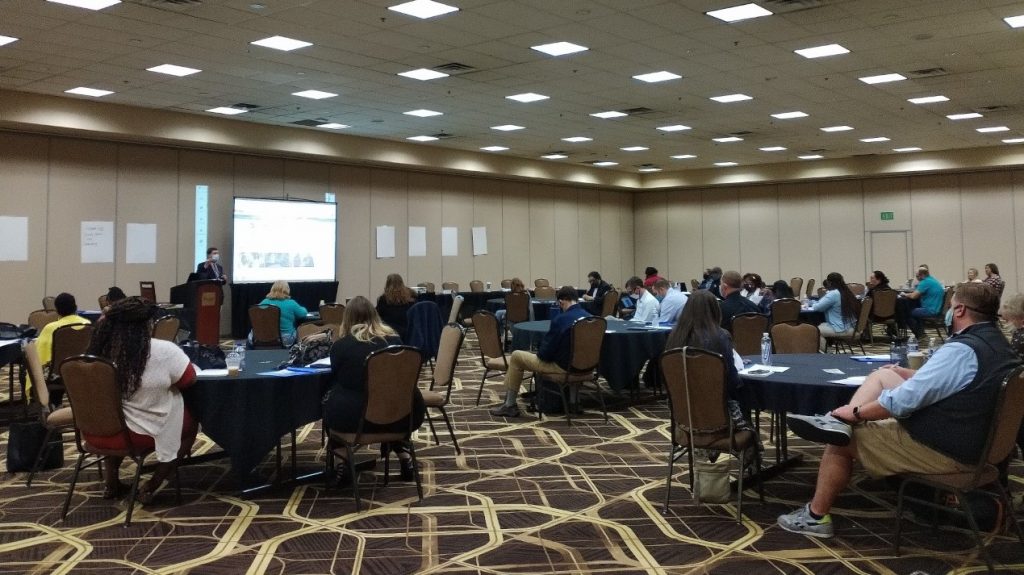
Meet Jordan, a highly motivated and experienced sales profession
al with a knack for making cold walk-ins work every single time (an impressive feat in any circumstance). And if you meet Jordan in person, you’ll understand why it works: the man is exuberant and personable with a quick wit and a joke for every occasion. It makes sense, then, that although his background is in Accounting, Jordan is a natural when it comes to sales.
Before joining ACCI, Jordan spent over a decade in the world of SaaS and technology, most recently working with the state of Utah to make COVID tests more accessible to the general public. When asked about what led him to a career in sales, and specifically sales in education tech/youth education courses, Jordan pointed to his love for people and the joy of teaching. About joining ACCI, Jordan said, “I was drawn to ACCI’s mission and vision and the passion and dedication of the leadership and team. I am excited to be part of an organization that takes an evidence-based approach to community corrections and a commitment to helping individuals achieve lasting positive change.”
With his infectious positivity, love for life, and dedication to his work, Jordan is a valuable asset to any team. Welcome to ACCI, Jordan!
Quick Q&A
Q: If you could choose a superpower, what would it be? Why?
A: Teleportation, hands down. Who has time for traffic and long commutes?
Q: What’s one hobby you’d love to get into/pick up?
A: I have always been fascinated by learning to fly a plane. I would love to learn more about it.
Q: What book are you reading now?
A: Currently, I’m reading “The Outward Mindset” – have you heard of it?
Q: What is a hidden talent of yours?
A: I love to sing and have been told I can carry a tune quite well!
Q: What’s your go-to karaoke song?
A: This is the toughest question of them all. It is very situational, but I am always ready to come off the bench and contribute.
Q: Your best life advice in 6 words or less?
A: “Be happy; it drives people crazy!”
 Meet Jordan, a highly motivated and experienced sales professional with a knack for making cold walk-ins work every single time (an impressive feat in any circumstance). And if you meet Jordan in person, you’ll understand why it works: the man is exuberant and personable with a quick wit and a joke for every occasion. It makes sense, then, that although his background is in Accounting, Jordan is a natural when it comes to sales.
Before joining ACCI, Jordan spent over a decade in the world of SaaS and technology, most recently working with the state of Utah to make COVID tests more accessible to the general public. When asked about what led him to a career in sales, and specifically sales in education tech/youth education courses, Jordan pointed to his love for people and the joy of teaching. About joining ACCI, Jordan said, “I was drawn to ACCI’s mission and vision and the passion and dedication of the leadership and team. I am excited to be part of an organization that takes an evidence-based approach to community corrections and a commitment to helping individuals achieve lasting positive change.”
With his infectious positivity, love for life, and dedication to his work, Jordan is a valuable asset to any team. Welcome to ACCI, Jordan!
Meet Jordan, a highly motivated and experienced sales professional with a knack for making cold walk-ins work every single time (an impressive feat in any circumstance). And if you meet Jordan in person, you’ll understand why it works: the man is exuberant and personable with a quick wit and a joke for every occasion. It makes sense, then, that although his background is in Accounting, Jordan is a natural when it comes to sales.
Before joining ACCI, Jordan spent over a decade in the world of SaaS and technology, most recently working with the state of Utah to make COVID tests more accessible to the general public. When asked about what led him to a career in sales, and specifically sales in education tech/youth education courses, Jordan pointed to his love for people and the joy of teaching. About joining ACCI, Jordan said, “I was drawn to ACCI’s mission and vision and the passion and dedication of the leadership and team. I am excited to be part of an organization that takes an evidence-based approach to community corrections and a commitment to helping individuals achieve lasting positive change.”
With his infectious positivity, love for life, and dedication to his work, Jordan is a valuable asset to any team. Welcome to ACCI, Jordan!
















